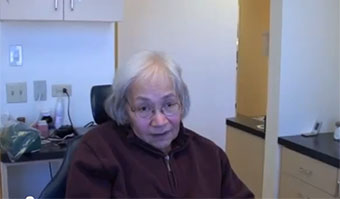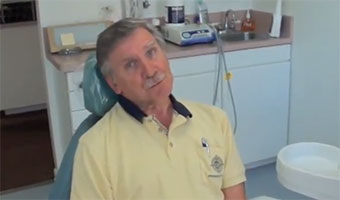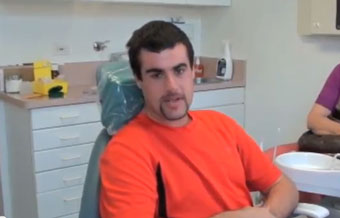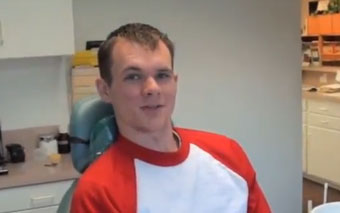[vc_row alt_color=”” alt_bg_color=”” parallax=”” full_width=”” full_screen=”” background_overlay=”” mask=”” mask_style=”50″ vertical_align=”” padding_size=”” el_class=””][vc_column alt_color=”” alt_bg_color=”” text_align=”” padding_size=”” el_class=”” width=”1/1″][heading title=”Movement Disorders” style=”4″][vc_custom_heading text=”There are several diseases and disorders that have been linked to problems with TMJ. The following list provides a look into these diseases and shows the connection that TMJ/TMD with specific facets of the disorders.” font_container=”tag:p|font_size:26px|text_align:center|line_height:36px” google_fonts=”font_family:Lato%3A100%2C100italic%2C300%2C300italic%2Cregular%2Citalic%2C700%2C700italic%2C900%2C900italic|font_style:300%20light%20regular%3A300%3Anormal”][vc_empty_space height=”15px”][vc_accordion collapsible=”yes” disable_keyboard=”” active_tab=”false”][vc_accordion_tab icon=”fa fa-plus-circle” title=”Parkinson’s Disease”][vc_column_text] Parkinson’s Disease (PD) is a progressive neurological disorder that affects movement. Its symptoms may include tremors, rigidity, and blank faces. Slowing or jerky movements are also characteristic of this disease. Comorbidities of Parkinson’s include difficulty sleeping, forward head posture, problems with balance, and other neurologic problems. Symptoms of the disease usually begin between 50 and 60 years old, although some have experienced earlier symptom onset (WebMD, 2010). Various diagnostic tests are used to determine PD, although there are many disorders that resemble Parkinson’s symptoms.
Parkinson’s Disease (PD) is a progressive neurological disorder that affects movement. Its symptoms may include tremors, rigidity, and blank faces. Slowing or jerky movements are also characteristic of this disease. Comorbidities of Parkinson’s include difficulty sleeping, forward head posture, problems with balance, and other neurologic problems. Symptoms of the disease usually begin between 50 and 60 years old, although some have experienced earlier symptom onset (WebMD, 2010). Various diagnostic tests are used to determine PD, although there are many disorders that resemble Parkinson’s symptoms.
Read More ->[/vc_column_text][/vc_accordion_tab][vc_accordion_tab icon=”fa fa-plus-circle” title=”Dystonia”][vc_column_text] Cervical Dystonia (CD), or Spasmodic Torticollis, is characterized by abnormal movement or positioning of the head and neck muscles. These sustained muscle contractions result in abnormal head postures which vary depending on the muscles that are affected. CD is the most common form of focal dystonia (it affects one area of the body) and is found in twice as many women as men (Sims, Stack, & Demerjian, 2012). Symptoms of CD include rotational twisting (laterocollis), backward rotation (retrocollis), or frontal rotation (anterocollis), of the head / neck and/or a combination of these. Pain or head tremor is often associated with those that have sustained contractions and there is often associated dystonia in the upper muscles of the same side (segmental dystonia) (Sims & Demerjian, 2012).
Cervical Dystonia (CD), or Spasmodic Torticollis, is characterized by abnormal movement or positioning of the head and neck muscles. These sustained muscle contractions result in abnormal head postures which vary depending on the muscles that are affected. CD is the most common form of focal dystonia (it affects one area of the body) and is found in twice as many women as men (Sims, Stack, & Demerjian, 2012). Symptoms of CD include rotational twisting (laterocollis), backward rotation (retrocollis), or frontal rotation (anterocollis), of the head / neck and/or a combination of these. Pain or head tremor is often associated with those that have sustained contractions and there is often associated dystonia in the upper muscles of the same side (segmental dystonia) (Sims & Demerjian, 2012).
Read More ->[/vc_column_text][/vc_accordion_tab][vc_accordion_tab icon=”fa fa-plus-circle” title=”Fibromyalgia”][vc_column_text]
Fibromyalgia is a chronic disorder characterized by pain and tenderness in the joints and muscles of the entire body. It is accompanied by fatigue, loss of sleep, headaches, and has also been linked to depression and anxiety (A.D.A.M. Medical Encyclopedia, 2012). Fibromyalgia is believed to be the result of amplified pain sensations that affect the way the brain processes pain signals (Mayo Clinic, 2011), although it has also been attributed to physical or emotional stress, repetitive injuries, or illness (NIAMS, 2011). Symptoms of fibromyalgia mainly involve pain. Tender points, or painful areas, can be found in the soft tissue of the neck, shoulders, back, hips, elbows, and knees. From these areas, the pain surges to different parts of the body and may feel like a deep ache or a shooting “burning” pain (A.D.A.M. Medical Encyclopedia, 2012). Fibromyalgia affects more women than men, most commonly occurring around middle-age (NIAMS, 2011). It is also more likely to develop in those who have a family member with the disorder and those that have a rheumatic disease (Mayo Clinic, 2011).
[/vc_column_text][/vc_accordion_tab][vc_accordion_tab icon=”fa fa-plus-circle” title=”Tourette Syndrome”][vc_column_text] Tourette Syndrome (TS) is a neurological disorder characterized by involuntary movements (tics) and vocalizations. Tics occur frequently and rapidly and can present itself on the face, specific body parts, or the entire body. These uncontrollable motor movements may start as an eye blink or a nose twitch, but can progress to more complicated movements such as kicking or stamping (nTSA, 2012). Verbal tics, such as groaning or throat clearing, usually accompany these involuntary movements. Echolalia, or the spontaneous utterance of sounds, is a well-documented symptom of TS (Sims & Demerjian, 2012), although corpolalia, or involuntary swearing, which is popularly associated with the disorder, is a rare occurrence (nTSA, 2012). Symptoms of TS include either simple or complex tics and often get worse with intense emotions, excitement, or anxiety (NINDS, 2012).
Tourette Syndrome (TS) is a neurological disorder characterized by involuntary movements (tics) and vocalizations. Tics occur frequently and rapidly and can present itself on the face, specific body parts, or the entire body. These uncontrollable motor movements may start as an eye blink or a nose twitch, but can progress to more complicated movements such as kicking or stamping (nTSA, 2012). Verbal tics, such as groaning or throat clearing, usually accompany these involuntary movements. Echolalia, or the spontaneous utterance of sounds, is a well-documented symptom of TS (Sims & Demerjian, 2012), although corpolalia, or involuntary swearing, which is popularly associated with the disorder, is a rare occurrence (nTSA, 2012). Symptoms of TS include either simple or complex tics and often get worse with intense emotions, excitement, or anxiety (NINDS, 2012).
Read More ->[/vc_column_text][/vc_accordion_tab][vc_accordion_tab icon=”fa fa-plus-circle” title=”CRPS/RSD”][vc_column_text]
 Complex Regional Pain Syndrome (CRPS), also known as Reflex Sympathetic Dystrophy (RSD), is a nerve disorder that produces chronic pain in an area of the body and is believed to occur as a result of injury or dysfunction to the nervous system (NINDS, 2012). Common features of CRPS include severe skin discoloration and temperature changes over the affected body part, followed by an intense burning sensation, sensitivity to touch, and swelling (NINDS, 2012). CRPS has two forms: CRPS I occurs as a result of a minor injury and CRPS II occurs due to injury to a nerve (A.D.A.M. Medical Encyclopedia, 2012). CRPS affects both men and women of any age, although many experts agree that it is more common among young women (NINDS, 2012).
Complex Regional Pain Syndrome (CRPS), also known as Reflex Sympathetic Dystrophy (RSD), is a nerve disorder that produces chronic pain in an area of the body and is believed to occur as a result of injury or dysfunction to the nervous system (NINDS, 2012). Common features of CRPS include severe skin discoloration and temperature changes over the affected body part, followed by an intense burning sensation, sensitivity to touch, and swelling (NINDS, 2012). CRPS has two forms: CRPS I occurs as a result of a minor injury and CRPS II occurs due to injury to a nerve (A.D.A.M. Medical Encyclopedia, 2012). CRPS affects both men and women of any age, although many experts agree that it is more common among young women (NINDS, 2012).
[/vc_column_text][/vc_accordion_tab][/vc_accordion][/vc_column][/vc_row]

No Responses